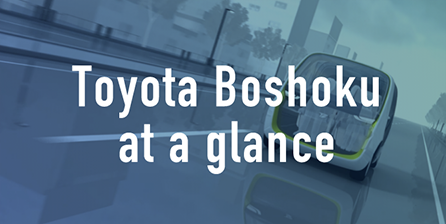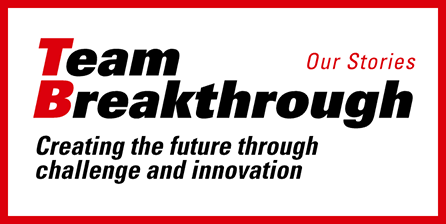Job Satisfaction and Employment
Basic concept of Human Resources Management (HRM)
With a good relationship between labor and management as a vital foundation, Toyota Boshoku aims to both guarantee stable employment and to maintain and continue improving working conditions into the mid- and long-term future. We are working to ensure consistent and thorough communication between labor and management—including but not limited to labor-management meetings—with each sharing plans, issues encountered, and other relevant information to ensure that both are able to fulfill their respective responsibilities. In addition, Toyota Boshoku promotes the development of human resources by conducting evaluations that use standards reflecting our core values and also provides fair and equitable conditions for all members. Furthermore, we strictly respect the laws and social regulations of every country and region we operate in, whether they concern working hours, days off, wages, or other basic working conditions.

Promote “innovation of vibrant work style”
“Innovation of vibrant work style” refers to the Toyota Boshoku group’s challenge to reform our organization and culture. In order to quantitatively confirm the results of vibrant work style innovation and vibrant working by our company members, we have introduced the KPI on vibrant work environment as a company-wide metric, and with an aim to further improvements, we are working to develop more flexible, efficient, and creative work rules, and to create a workplace where company members can enjoy their work, and feel fulfilled by their jobs.
Regarding to working hours, we strictly respect the Labor Standards Act (a law that governs working conditions in Japan), and make sure to carry out all legally mandated procedures in the event that a company member works longer than the designated duration of legal working hours. Additionally, from a health management perspective, we are aiming to curb long working hours by setting a target of "zero company members working overtime in excess of 540 hours per year (excluding managers and supervisors)."
As a specific measure to curb long working hours, at the company-wide level we are implementing the following:
(ⅰ) Document simplification activities
(ⅱ) Meeting streamlining activities
(ⅲ) Use of digital tools (e.g. robotic process automation (RPA))
In this way, we are promoting operational streamlining.
Furthermore, we are promoting flexible work styles by providing systems that allow company members to work without being restricted by time or place, such as coreless flextime (flextime without core hours) and teleworking systems.
We will continue working to promote an even higher level of vibrant work style innovation, both to achieve our 2025 Mid-Term Business Plan, and to further empower our company members to feel vibrant and fulfilled.
Overview of “Innovation of vibrant work style”

Company members’ satisfaction:
Positive response rate (KPI on vibrant work environment) [Toyota Boshoku]
The positive response rate on company members’ satisfaction measures satisfaction with corporate life and motivation to work. It is calculated from company member surveys conducted twice a year.
| Fiscal year | 2019 | 2020 | 2021 | 2022 | 2023 |
|---|---|---|---|---|---|
| Company members’ satisfaction: Positive response rate (%) |
67.8 | 67.2 | 71.5 | 71.1 | 70.4 |
Use of annual paid holiday [Toyota Boshoku]
The paid holiday utilization rate has remained high, exceeding 95% in the most recent five-year period. In fiscal 2024, the company target continues to be 14 days of paid holiday per year or the non-elimination of accrued paid holiday (encouraging members to take paid holiday within the validity period) for union members, and 6 days of paid holiday per year for managers and supervisors, with labor and management working together to encourage the utilization of such leave.
![Graph:Use of annual paid holiday [Toyota Boshoku]](/_assets/img/sustainability/social/employees/img2_02@global.svg)
- Excluding members on leave and members on overseas assignment
Source: Industry-wide data based on the Ministry of Health, Labour and Welfare’s General Survey on Working Conditions - Please note that percentages shown may exceed 100%, as the total is calculated by dividing the total number of paid holidays taken in a year (including paid holidays carried over from the previous fiscal year), divided by the total allowance of paid holiday for this year only (i.e. not including paid holidays carried over from the previous fiscal year).
Treatment of fixed-term company members and temporary workers
We employ fixed-term company members in compliance with labor-related laws and regulations, and treat them appropriately in accordance with the employment rules and various regulations, including various types of social insurance and leave as stipulated by law. With regard to the wages of fixed-term contractors, we strongly believe in the concept of “same work, same wages,” and operate in such a way as to prevent any discrepancies between the treatment and that of regular company members. In addition, the employment of temporary workers is handled in accordance with the Worker Dispatching Act, Guidelines for Measures to be Taken by Clients, and other laws and regulations.
Graduate and mid-career recruitment
In hiring graduates, our policy is to recruit highly capable individuals with diverse attributes and values in an active and stable, sustainable manner.
In terms of mid-career recruitment, in order to achieve our Mid-Term Business Plan, we are hiring people with advanced specialized skills, such as digital transformation (DX) and environment-related technologies.
Additionally, we are building an environment where the same opportunities for training and promotion are available to all company members, regardless of when or how they joined the company. In the future, we will focus on implementing new policies, alongside our regular work acquiring talented people with different backgrounds, experience, and knowledge, who can bring added value to our company’s business.
Number of persons recruited [Toyota Boshoku]
| Fiscal year | Unit | 2019 | 2020 | 2021 | 2022 | 2023 | ||
|---|---|---|---|---|---|---|---|---|
| Graduate recruitment | Administrative and engineering | Male | People | 107 | 95 | 88 | 58 | 80 |
| Female | People | 18 | 40 | 30 | 20 | 25 | ||
| Skilled | Male | People | 51 | 75 | 54 | 48 | 51 | |
| Female | People | 5 | 14 | 13 | 9 | 12 | ||
| Ratio of women | % | 12.7 | 24.1 | 23.2 | 21.5 | 22 | ||
| Total | People | 181 | 224 | 185 | 135 | 168 | ||
| Mid-career recruitment | Administrative and engineering | Male | People | 35 | 24 | 0 | 1 | 19 |
| Female | People | 4 | 7 | 8 | 8 | 7 | ||
| Skilled | Male | People | 1 | 1 | 0 | 0 | 0 | |
| Female | People | 1 | 1 | 1 | 0 | 0 | ||
| Employees recruited as mid-career, as percentage of total number of employees recruited per year | % | 18.5 | 12.8 | 4.6 | 7 | 13 | ||
| Total | People | 41 | 33 | 9 | 9 | 26 | ||
| Graduate + mid-career recruitment Total | People | 222 | 257 | 194 | 144 | 194 | ||
Human resource retention activities
In recent years, there has been increased mobility of human resources, and the employment market and workers' attitudes have also changed. However, the turnover rate at Toyota Boshoku is not as high as the industry-wide rate due to the promotion of vibrant work style innovation and enhancement of the workplace environment.
Since about 80% of company members who leave the company are regular company members, as activities to retain new company members we implement "assignments that take into account the individual's wishes, personal aptitude, and subject major," "post-assignment questionnaires and individual interviews," and "three-way meetings with supervisors and senior company members using a training record chart." In addition, to ensure smooth communication with new company members, direct supervisors and senior company members undertake "communication skills training." We believe that this training also has a positive impact on subsequent on-the-job training activities, and helps to maintain the motivation of new company members.
Turnover rate of those leaving in under three years (full-time members) [Toyota Boshoku]
| Fiscal year | 2019 | 2020 | 2021 | 2022 | 2023 | Average |
|---|---|---|---|---|---|---|
| Turnover rate (%) of those leaving in under three years (full-time members) | 1.70 | 2.25 | 2.62 | 2.06 | 3.65 | 2.46 |





